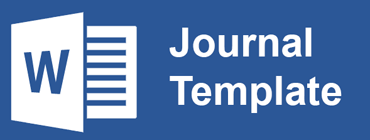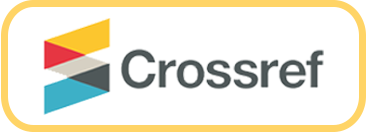THE INTERACTIONS OF MADZHABS IN ACEH: The Tripolar Typology
Abstract
Abstract: This study aims to analyze the model of interactions amongst various legal school of thoughts in contemporary Aceh. This study was a field study with the qualitative method. The method used to analyze the data was descriptive analysis. In this research, it is revealed that the dynamic of interactions of Islam in spins around three typologies which are exclusivism, inclusivism and pluralism. As for the first typology, it is believed that the Shâfi‘î madhab is the only legitimate school and thus should be abide by. The second polar is inclusivism, a typology in which society tends to adhere to Shâfi‘î madhab in the realm of religious observation (‘ibâdah) and (mu‘âmalah) though it still gives room and tolerate any other madhabs to to survive side by side. The author asserts that this typology could be considered the neutral way to solve the current religious problems in Aceh. The third polar is pluralism that can be utilized as a principal standard in building the harmony, peace and respect amongst the Acehnese in order to accomplish the ultimate goal of Islam as rahmat li al-‘âlamîn.
Keywords: Islamic law, madhab, Aceh, exclusivism, inclusivism, pluralism
Full Text:
PDFReferences
Anshori, Muhammad Afif. “Konstelasi Tasawuf Sunni dan Tasawuf Falsafi di Nusantara,” in Teosofi: Jurnal Tasawuf dan Pemikiran Islam, Number 2, Volume 4, 2014.
An Noor, Farish. “Popular Religiosity in Indonesia: the Next Step after ‘Islam Kultural’,” in al-Jami’ah. Vol. 53, No. 2 (2015).
Azizi, A. Qadri. Reformasi Bermazhab. Jakarta: Kalista, 2004.
Feener, R. Michael. “Social Engineering through Shari’ah: Islamic Law and State-Directed Da’wa in Contemporary Aceh,” in Islamic Law Review. Year 3 Vol 3, 2013.
Hardiansyah. “Peran Ulama dalam Implementasi Syariat Islam di Aceh: Studi Kasus pada Peranan Teungku Dayah Sekitar Pemukiman Krueng Pasee Kecamatan Samudera Aceh Utara.” Universitas Sumatera Utara, 2010.
Isa, A. Gani. “Implementation of Islamic Shariah in Special Autonomy: A Case of Aceh Province,” in MIQOT: Jurnal Ilmu-ilmu Keislaman. Vol. XXXVIII, No. 1, (2014).
Juandi, Wawan and Abu Yazid. “al-Tafkîr al-Fiqh bayn al-Tharîqat al-Taqlîdiyyah wa al-Manhajiyyah fî al-Ma‘âhid al-Islâmiyyah al-Mitsâliyyah fî Indûnîsiyâ,” in Journal of Indonesian Islam. Vol. 10, No. 1, (2016).
Junaidy, Abdul Basith. “Revitalisasi Ushul Fiqh dalam Menghadapi Perubahan Sosial,” in Islamica, Vol. 3, No. 2, Maret 2009.
Maimun. “Reorientasi Ijtihad Kontemporer: Analisis Hukum Islam,” in al-‘Adalah, Vol. 11 No. 2 Juli 2013.
Muammar Bakry, “Pengembangan Karakter Toleran dalam Problematika Mazhab Fikih,” in al-Ulum, Vol 14 No. 1, Juni 2014.
Nasrullah. “Tantangan dan Respon Kaum Tua dan Kaum Muda terhadap Tarekat di Minangkabau (1906-1933)”. Thesis for Undergraduate. Yogyakarta: UIN Sunan Kalijaga.
Al-Qaradhâwî, Yûsuf. Fiqh al-Ikhtilâf. Kairo: Dâr al-Sahwah, 1992.
Race, Alan. Christians and Religious Pluralism: Patterns in the Christian Theology of Religions. New York: Orbis Books, 1982.
Rahmatullah, Luthfi. “Eksistensi Hukum Islam di Tengah Keragaman Budaya Indonesia: Perspektif Baru Sejarah Hukum Islam dalam Bingkai Dialektika Nilai-nilai Syari’ah dan Budaya,” in Al-Manahij, Vol. 10, No. 16, (2016).
Reid, Anthony. “Religious Pluralism or Conformity in Southeast Asia’s Cultural Legacy,” in Studia Islamica, Vol. 22, No. 3, (2015).
Rose, Kenneth. Pluralism: The Future of Religion. USA: Bloomsbury Publishing, 2013.
Saleh, Fauzi. “Problematika Talfiq Mazhab dalam Penemuan Hukum Islam,” in Islamica, Vol. 6, No. 1 (September 2011)
Saleh, Fauzi. “Mawah” in Serambi Indonesia, 20 May 2011.
Shaw, Robert. “Aceh’s Struggle for Independence: Considering the Role of Islam in a Separatis,” in an-Nakhlah, 2008.
Silahuddin. “Budaya Akademik dalam Sistem Pendidikan Dayah Salafiyah di Aceh,” in MIQOT: Jurnal Ilmu-ilmu Keislaman. Vol. XL, No. 2, (2016).
Sprierings, Niels. “The Influence of Islamic Orientations on Democratic Support and Tolerance in Five Arab Countries,” in Politics and Religion, 7 (2014).
Syahnan, Mhd., “The Image of the Prophet and the Systematization of Ushul al-Fiqh: A Study of al-Shafi’i’s Risalah,” in MIQOT: Jurnal Ilmu-ilmu Keislaman, 103 (1), 1998.
Syahnan, Mhd., “Comparative Law in the Middle East and its Relation to the Islamic Legal Modernization,” in Tanzimat: Jurnal Ilmu Pengetahuan dan Kemasyarakatan, Vol. 11, No. 11, January-June 2011.
Taylor, Reed. “Syariah as Heterotopia: Responses from Muslim Women in Aceh, Indonesia,” in Religion, 2015.
DOI: http://dx.doi.org/10.30821/miqot.v41i1.327
Refbacks
- There are currently no refbacks.
MIQOT: Jurnal Ilmu-ilmu Keislaman (P-ISSN: 0852-0720; E-ISSN: 2502-3616) by http://jurnalmiqotojs.uinsu.ac.id/index.php/jurnalmiqot/index is licensed under a Creative Commons Attribution-ShareAlike 4.0 International License.
Copyright �2023 Universitas Islam Negeri Sumatera Utara Medan. Powered by Public Knowledge Project OJS.
















